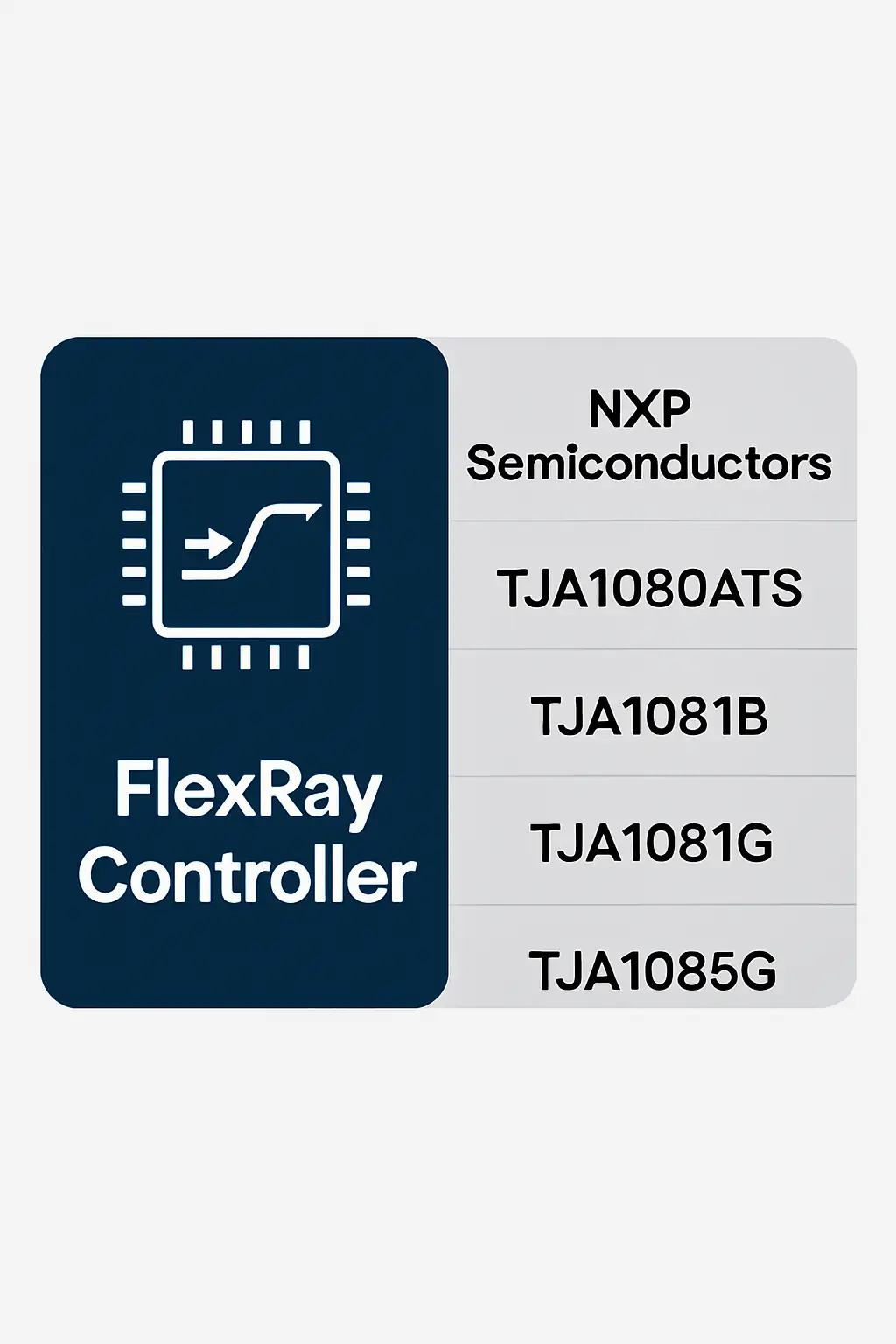FlexRay Controller
The FlexRay Controller is a critical component in modern Automotive Electronics systems, specifically within the Connectivity & Telematics domain. It belongs to the Communication Interfaces category and plays a key role in enabling high-speed, deterministic communication between various electronic control units (ECUs) in a vehicle. Designed for real-time data exchange, the FlexRay Controller supports advanced automotive applications that require reliable and low-latency communication.
This controller is widely used in safety-critical systems such as active suspension, brake control, and powertrain management, where precise timing and data integrity are essential. Its robust architecture ensures stable performance under demanding conditions, making it ideal for use in high-end vehicles and autonomous driving technologies.
In addition to its role in vehicle dynamics, the FlexRay Controller enhances vehicle connectivity by supporting seamless integration with external networks and onboard systems. It enables efficient data transfer between ECUs, infotainment systems, and telematics modules, contributing to a more connected and responsive driving experience.
The FlexRay protocol offers superior bandwidth and fault tolerance compared to traditional CAN or LIN protocols, making it suitable for complex automotive applications. As the automotive industry moves toward smarter, more interconnected vehicles, the FlexRay Controller remains a vital component in ensuring reliable and high-performance communication across the vehicle's electronic architecture.
Details
FlexRay Controller

Related Parts
| Series Name | Description | Manufacturer Name | Attribute Description |
|---|---|---|---|
| NXP Semiconductors | 3.3V/5V supply, high-speed CAN transceiver, ISO 11898-2 compliant, data rate up to 1 Mbps, integrated low-power mode, wide temperature range, ESD protection, fault-tolerant RXD input. | ||
| NXP Semiconductors | 3.3V CAN transceiver, high-speed up to 1 Mbps, low-power standby mode, integrated VIO level shift, wide supply voltage range, ESD protection, TXD dominant timeout. | ||
| NXP Semiconductors | 3.3V/5V tolerant, high-speed CAN transceiver with low-power mode, data rate up to 1 Mbps, integrated VIO level shift, ESD protection, and fault-tolerant RXD output. | ||
| NXP Semiconductors | 3.3V CAN transceiver, high-speed up to 1 Mbps, low-power standby mode, wide supply voltage range, ESD protection, TXD dominant timeout, thermal shutdown, -40°C to +125°C operating temperature. | ||
| NXP Semiconductors | 5V CAN transceiver, high-speed up to 1 Mbps, wide supply range (4.5–28 V), low EMI, integrated LDO, TXD dominant timeout, thermal shutdown, -40°C to +125°C. | ||
| NXP Semiconductors | 3.3V/5V selectable supply voltage, high-speed CAN transceiver, up to 1 Mbps data rate, integrated VIO regulator, wide temperature range, ESD protection, low-power standby mode, TXD dominant timeout, ground shift tolerance. | ||
| NXP Semiconductors | 3.3V/5V tolerant CAN transceiver, high-speed up to 1 Mbps, low-power standby mode, ESD protection up to 8 kV, integrated VIO level shifter, suitable for automotive applications. | ||
| NXP Semiconductors | 32V max supply voltage, 5V/3.3V regulator outputs, high-side/low-side drivers, CAN FD and LIN transceivers, watchdog timer, SPI interface, operating temperature -40°C to +150°C, 48-pin LQFP package. | ||
| NXP Semiconductors | 3.3V CAN FD controller transceiver, 2 Mbps data rate, ±40V fault protection, low EMI, high-speed mode, VIO interface, -40°C to +125°C operating temperature, 14-pin HVSON package. |








.png?x-oss-process=image/format,webp/resize,h_32)










